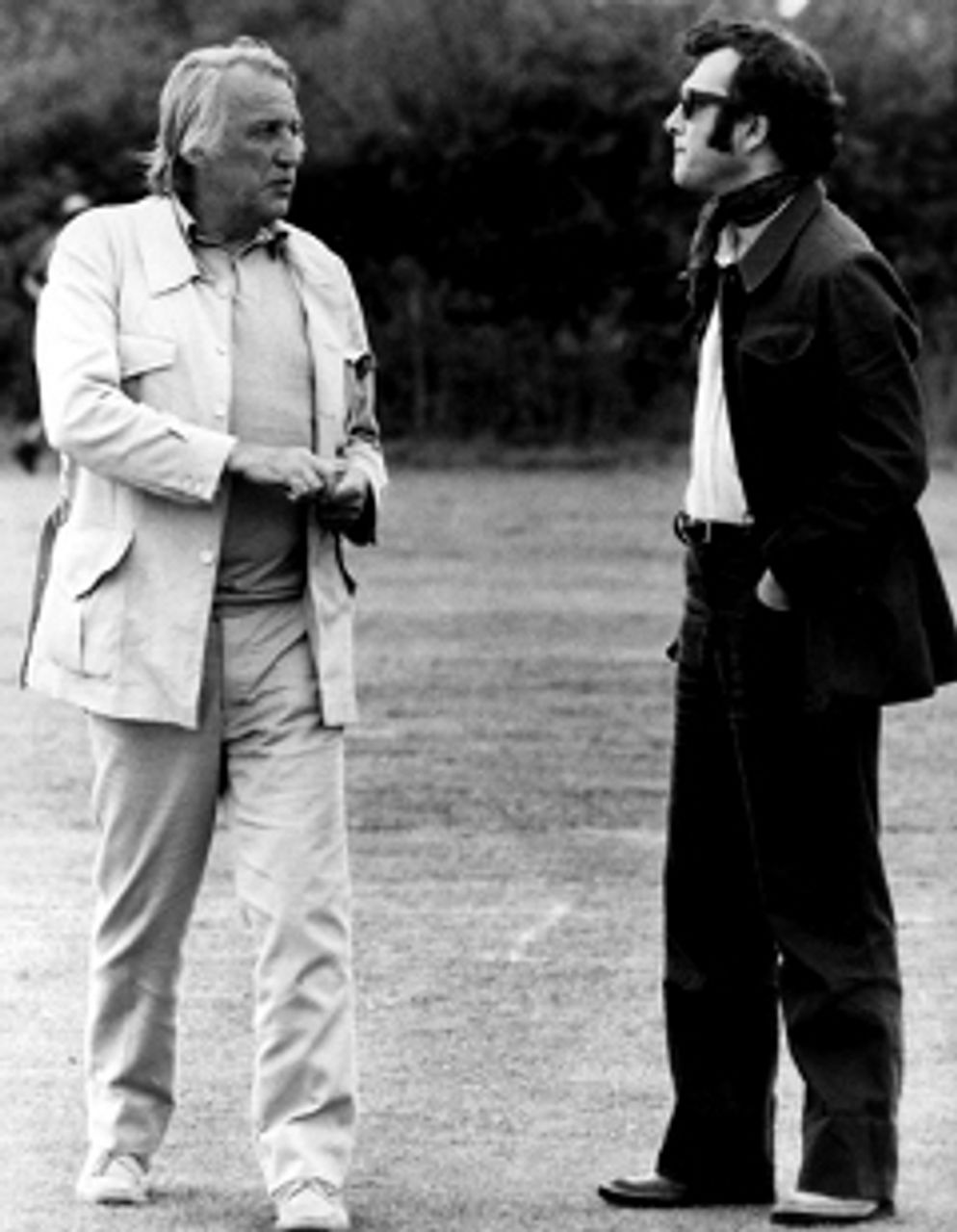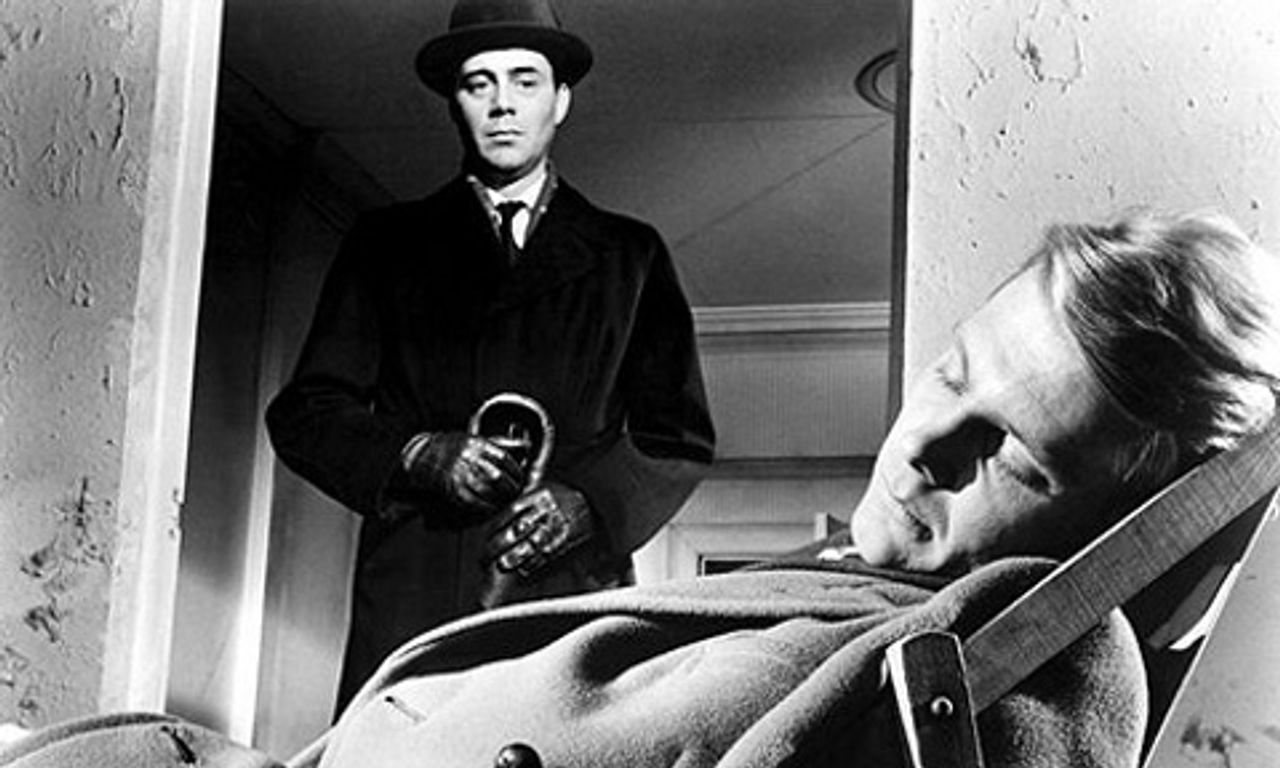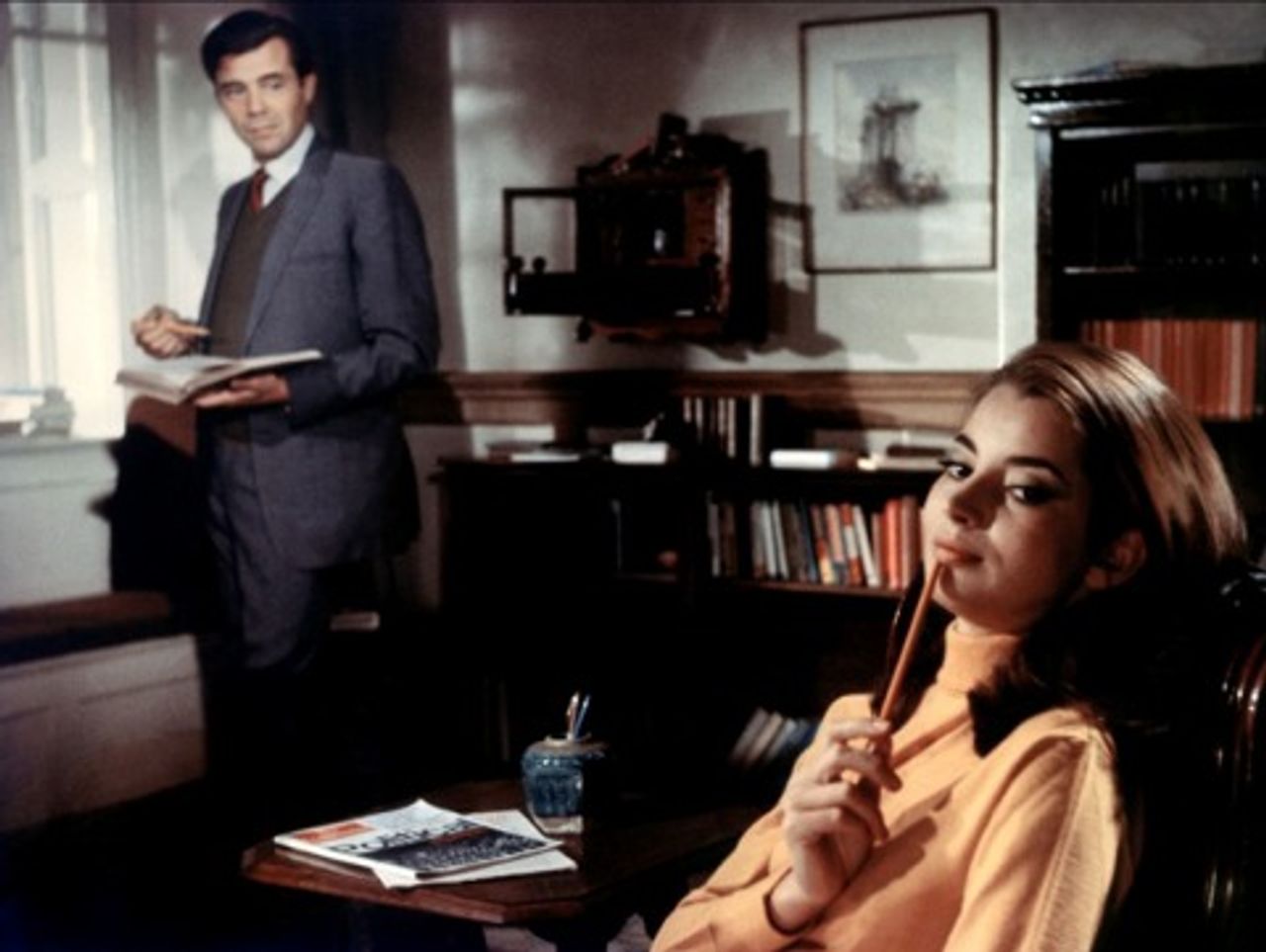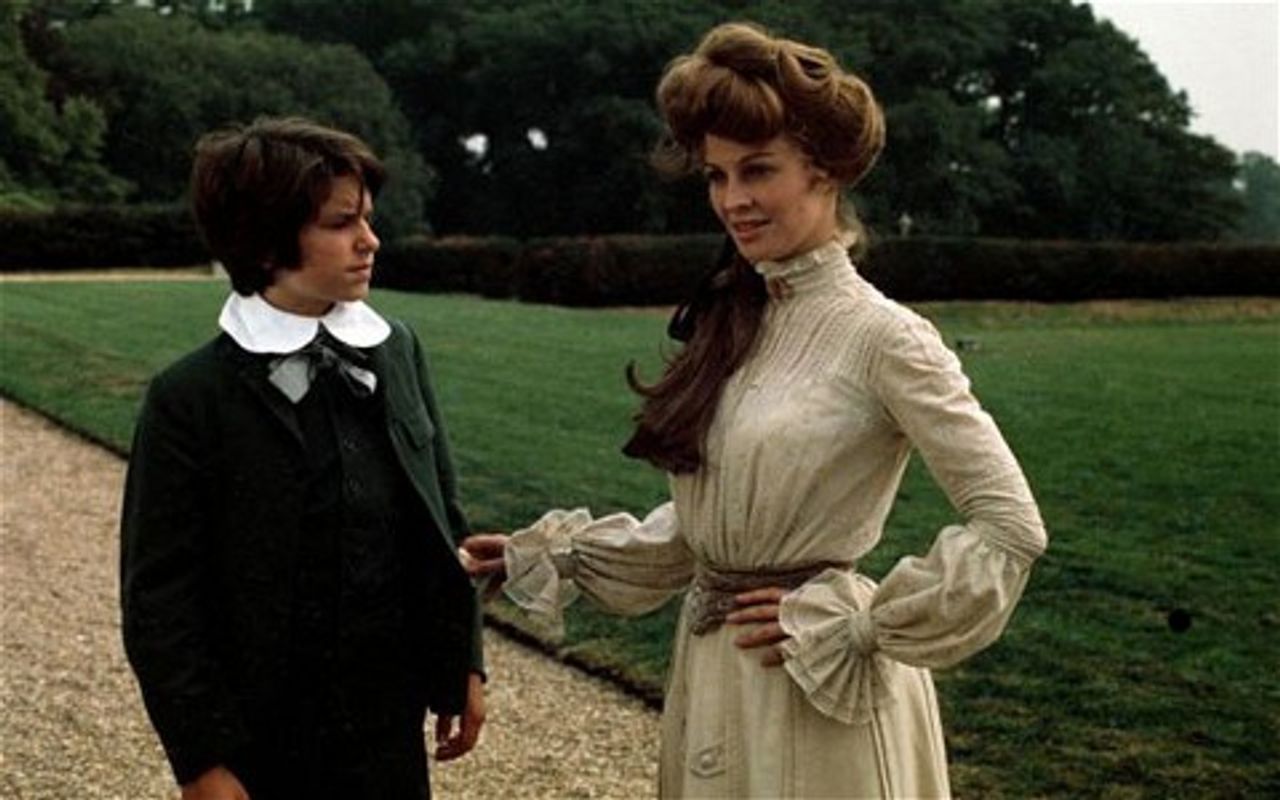While US filmmaker Joseph Losey (1909-1984) directed 37 features during his lengthy career, a number of his most acclaimed and influential films—The Servant, Accident and The Go-Between—were made in the 1960s and early 1970s in collaboration with British playwright Harold Pinter (1930-2008). More than four decades after the release of these movies, they remain engaging explorations of the damaging psychological impact of class society on human relations.
Born January 14, 1909 in La Crosse, Wisconsin, Losey was one of the more prominent figures of the Hollywood left before being hounded out of the US in the early 1950s during the anti-communist witch-hunts.
Prior to committing to filmmaking, Losey studied medicine at Dartmouth College and then majored in English literature at Harvard. Radicalised during the early years of the Great Depression, the 26-year-old Losey visited the Soviet Union in 1935 where he had the opportunity to immerse himself in the work of the Soviet avant-garde before that movement was completely crushed by the Stalinist bureaucracy.
Losey studied at the Moscow Art Theatre with Sergei Eisenstein and later worked, in Los Angeles, with Bertolt Brecht. [1] It was his collaboration with Vsevolod Meyerhold, however, that had the biggest impact. Meyerhold was a visionary avant-garde dramatist who fought against the crude propagandism of Stalinist “socialist realism.” He was one of many prominent figures in Soviet art and culture executed in the Stalinist purges.
Losey, on his return to the US, increased his involvement in political theatre and began directing documentaries and then low-budget feature films. Hollywood studio heads were no less hostile to genuinely artistic and dramatically convincing examinations of real life than the Stalinist bureaucracy. Losey’s artistic and political outlook shone through, however, to the extent that it was permitted in pre-blacklist Hollywood. His early features—The Boy With Green Hair (1948), The Lawless (1950), The Prowler (1951) and his 1951 remake of the Fritz Lang classic M—are noteworthy for their puncturing of various myths about contemporary America.
Losey’s left-wing views made him an obvious target of the House Un-American Activities Committee (HUAC) and when summonsed to appear before it in 1951, he refused and went into exile in England.
 Joseph Losey and Harold Pinter
Joseph Losey and Harold PinterUnder a variety of pseudonyms at first, Losey resumed his career and the kind of filmmaking that was increasingly taboo in the US. As he later recalled: “In a way my being black-listed was one of the best things that ever happened to me because it forced me to go to Europe to continue my career as a film maker. Otherwise I might have stayed on in Hollywood merely making money instead of making pictures I wanted to make. What could be worse than that?”
Losey’s socially critical outlook and his rejection of the narrow realism and ‘kitchen sink’ naturalism then dominating much of British drama was shared by the English actor and scriptwriter Harold Pinter.
The son of a Jewish immigrant tailor, Pinter was born and raised in Hackney, northeast London, with a deep hostility to social injustice, racism and militarism shaped by the Great Depression, the rise of fascism and World War II. When Losey met Pinter, the young playwright already had an impressive body of work behind him, most notably his plays The Room (1957), The Birthday Party (1958) and The Caretaker (1960). [2]
Pinter’s taut, atmospheric dramas were characterised by sparse, often enigmatic but bluntly realistic dialogue and a palpable sense that some sort of catastrophe was about to overturn the characters’ personal lives. This approach clearly resonated with Losey and the two men became close collaborators and friends.
The Servant (1963), their first joint effort, was adapted by Pinter from a Robin Maugham story of the same name. Set in the London home of an upper-class but hapless young man, the production, which starred James Fox, Dirk Bogarde, Sarah Miles and Wendy Craig, is a chilling work.
Having just acquired a stylish Georgian terrace home, the wealthy Tony (James Fox) hires Hugo Barrett (Dirk Bogarde) as his “man servant.” The luxurious, but claustrophobic setting and Douglas Slocombe’s stark black-and-white cinematography highlight the class differences and the psychological tension that begins to simmer between the two men.
 Dirk Bogarde, James Fox in The Servant
Dirk Bogarde, James Fox in The ServantA conflict develops as well between Barrett and Susan (Wendy Craig), Tony’s practical, affluent girlfriend, who comes to regard Barrett as a threat. Although she does not fully understand what’s taking place, she responds arrogantly to the man servant, in a desperate attempt to stop him from dominating the household. When Barrett introduces his working-class girlfriend Vera (Sarah Miles) into the house, presenting her as his sister, Tony inevitably succumbs to her manipulative charms, further complicating the already complex relationships.
Susan eventually flees the house after realising what a pathetic figure Tony has become and that a cruel psychological battle has been fought, and lost. While Barrett takes control of his master’s home, and his life, losers are to be found on both sides, with everyone irrevocably transformed.
The Servant was widely praised in European filmmaking circles and helped encourage a period of greater social and psychological realism in British cinema. In the spirit of Brecht and Meyerhold, the movie’s rejection of a passive, purely observational style and its creative use of sound, framing and editing, sensitised audiences not just to the destructive relations inside the master’s London home, but to those of British society at large.
Accident
Losey’s next collaboration with Pinter, based on an adaptation of Nicholas Moseley’s novel, Accident, was released in 1967. Mosley and Pinter, in fact, briefly appear in the movie, the latter as a cynical television producer.
Mainly set against the picturesque surroundings of Oxford University, the movie again features the remarkable Bogarde, this time as Stephen, a married professor undergoing a personal and professional mid-life crisis. Stephen’s relationship with his wife Rosalind (Vivien Merchant), who is pregnant with their third child, appears to be passionless.
 Dirk Bogarde and Jacqueline Sassard in Accident
Dirk Bogarde and Jacqueline Sassard in Accident
Slowly paced and visually lush, the film explores issues of infidelity and personal ambition and the relations among privileged sections of academia and the upper classes.
Told largely from Stephen’s perspective, the movie opens with a fatal car accident involving two of the professor’s students—Anna (Jacqueline Sassard) and William (Michael York)—near his rural home and then proceeds via a series of flashbacks.
Stephen and his ambitious colleague and best friend, Charlie (Stanley Baker), are both attracted to Anna, an upper-class Austrian exchange student. She is engaged to William, a British aristocrat oblivious to her emotionally crippling entanglements with the professors.
Charlie is also making his way as a television personality, a career path that Stephen contemplates might be more prestigious and fulfilling than his current career. As in Pinter’s plays, the dialogue is often mundane, but conversations are usually loaded with menacing implications or punctuated by lengthy silences. One scene, involving a doubles tennis match, is so laden with psychological tension and jealousy—with piercing glances across the court or a ball hit at an opponent a little too hard—that it seems less a tennis match than some sort of sexual game.
As Accident proceeds, through its interweaving flashbacks, life for Stephen becomes more frustrating. While the Oxford professor is not an especially likeable figure, Losey and Pinter skilfully capture the tragedy and emotional frustration of a man trapped in a world from which there appears to be no escape.
The Go-Between
While their first two movies were set in contemporary Britain, The Go-Between (1970), Losey’s last film with Pinter, was a fin de siècle period drama, but a no less devastating critique of bourgeois morality and the British social order.
Based on L.P. Hartley’s 1953 novel of the same name, the film is set at Brandham Hall, the rural estate of the wealthy Maudsley family and centres on a secret love affair between the beautiful young Lady Marian Maudsley (Julie Christie) and Ted Burgess (Alan Bates), her family’s tenant farmer. Their love, however, is doomed from the outset because she has been betrothed to Viscount Trimingham (Edward Fox).
 Dominic Guard and Julie Christie in The Go-Between
Dominic Guard and Julie Christie in The Go-BetweenThe movie, which won the Grand Prix at the Cannes Film Festival in 1971, is told from the standpoint of 13-year-old Leo Colston (Dominic Guard), whose boarding school best friend is Marcus Maudsley (Richard Gibson).
Colston, not from the upper classes, is invited to spend his summer holiday with the wealthy family and develops an intense crush on Marian. He innocently becomes Lady Marian and Ted’s secret “go between,” passing messages back and forth between the lovers, an affair that will have a destructive impact on all concerned.
In Marian’s case, the psychological injuries of her thwarted love are passed onto her offspring, like a curse, while Leo never emotionally recovers. And yet, everyone proceeds as if the rigid class conventions are natural, permanent and can never be challenged.
As Losey later explained: “It is fantastic the degree to which the English class structure influences practically every Englishman’s life, either in rebellion against it, or acceptance of it, or simply through their being gotten at by it without realising it, and sometimes whilst violently protesting that they’re not.” [3]
Losey and Pinter went on to collaborate in the early 1970s on a screenplay based on Marcel Proust’s In Search of Lost Time (A la recherche du temps perdu), but the work was never filmed—one of a number of planned projects that fell through due to financing difficulties.
While Losey’s latter work was seriously uneven, his three films with Pinter, and The Servant in particular, are aesthetically assured and unsettling works and well worth watching. At his best Losey was an interesting and intelligent filmmaker.
Against the claims of the media, countless politicians and not a few artists, Losey argued that class was “the major problem. Almost everything else stems from it.” Where in Hollywood today, or, for that matter, in any national cinema, does this elementary understanding animate those attempting to make serious films?
Notes:
[1] Losey later co-directed with Brecht the English-language premiere of the German playwright’s Galileo Galilei in Los Angeles in 1947. The filmmaker adapted the play as a movie in 1975.
[2] “Pinter’s The Caretaker at the Harvey Theater in Brooklyn: A classic has lost none of its power” (World Socialist Web Site, 23 May, 2012)
[3] James Leahy, The Cinema of Joseph Losey (London/New York: Zwemmer/Barnes, 1967).
